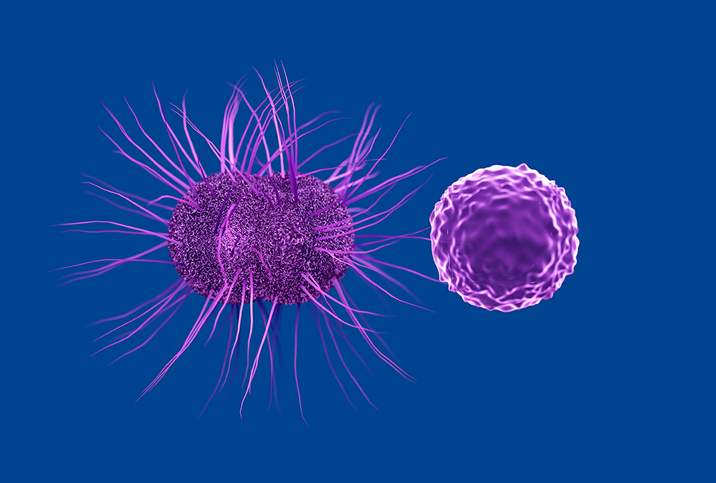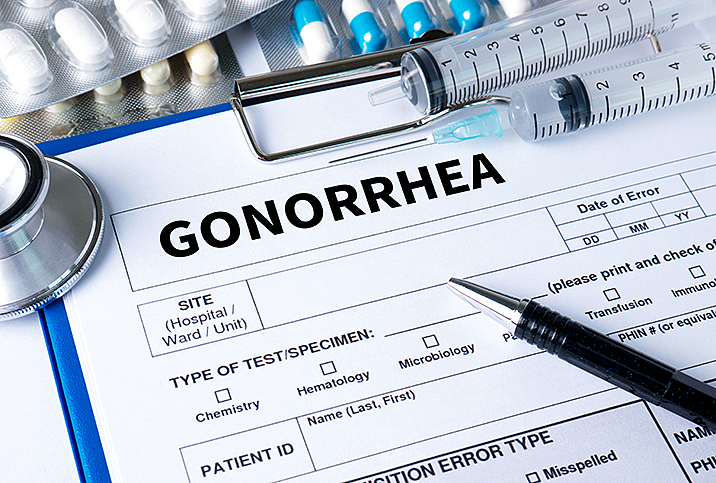Symptoms and Diagnosis of Gonorrhea and Chlamydia

Chlamydia and gonorrhea are two of the most common sexually transmitted diseases (STDs) in the world, affecting millions of people across the globe. While both diseases are easily treatable, they can lead to serious health complications if not treated early and sufficiently. Understanding the symptoms and diagnosis for both STDs is crucial in keeping yourself (and your sexual partners) healthy.
Gonorrhea, also known as "the clap," is caused by infection with the Neisseria gonorrhoeae bacterium. Gonorrhea is usually contracted by having unprotected oral, vaginal or anal sex with an infected person, and can affect people of all sexes. Gonorrhea spreads quickly and easily, and is becoming increasingly difficult to treat, with a rising number of antibiotic-resistant strains of the bacteria in circulation (colloquially known as super gonorrhea).
Chlamydia is caused by chlamydia trachomatis bacterium and, as with gonorrhea, can infect any sexually active person and affect the rectum, penis, vagina and throat. An infected pregnant woman can also pass the infection on to a baby delivered vaginally, which can sometimes cause dangerous eye infections or airway and lung infections/pneumonia.
Both diseases are easily spread through unprotected sex, including vaginal, anal and oral sex. You put yourself at risk of the infection (among other STDs) when you engage in sex with multiple partners or sex with no barrier methods, such as condoms and dental dams. Your risk is increased if you've had an STD before.
Symptoms of gonorrhea
Many people with gonorrhea experience zero visible symptoms, but there are signs to be aware of. Men may experience symptoms such as testicular discomfort, urethra swelling, painful or difficult urination and penile discharge. Further complications can arise if the infection goes untreated, including swelling of the penis or testicles and urethral stricture (a narrowing of the urethra).
Gonorrhea can also affect the rectum, causing pain, bleeding, discharge or proctitis (inflammation of the rectum lining).
Symptoms of gonorrhea in females are generally mild, if detectable at all, and include abnormal vaginal discharge, vaginal and/or pelvic pain, difficulty urinating and the formation of a tubo-ovarian abscess in the fallopian tube and ovary. Untreated gonorrhea in the urinary tract and genitals can cause serious issues, such as severe reproductive complications and kidney infection, and can be fatal if it spreads to the bloodstream.
Furthermore, untreated gonorrhea of the cervix can cause infection/inflammation of the fallopian tubes and pelvic inflammatory disease (PID), which can cause pelvic pain, infertility and risk for ectopic pregnancy.
Symptoms of chlamydia
As with gonorrhea, chlamydia often goes undetected, as it sometimes shows no symptoms. In cases where chlamydia does cause symptoms, men may experience penis discharge, itching or burning near the penis opening, painful urination, testicular pain and swelling or rectal discharge, pain or bleeding.
Women infected with chlamydia may experience abnormal or strong-smelling vaginal discharge, painful sex, lower abdominal pain or bleeding between periods and after sex.
Untreated chlamydia can lead to serious health complications in men, including the infection of the testicles and prostate glands. Chlamydia in women can lead to PID, infertility and ectopic pregnancy, due to scarring of the fallopian tubes. Both men and women can suffer reactive arthritis (also a potential complication of gonorrhea) and joint pain.
Testing
Thankfully, as with most STDs, chlamydia and gonorrhea are easy to diagnose. It's important to monitor your health and take note of any new or unusual symptoms. Even if you do not have any visible symptoms, get tested regularly for STDs. Anyone who is sexually active is at risk and getting screened is the only sure way to know if you've been infected.
While it might seem intimidating to get an STD test, it's a really easy process. Regular STD screenings can be done at a doctor's office, clinic, student health center or even in your home (yes, they have home STD tests now!).
The most commonly used diagnostic tool is a urine test. Urine tests are noninvasive, pain-free and relatively simple. Your healthcare provider (or test kit) will provide you with a sterile cup in which you will pee. That sample will be sent to a lab, where it will be screened for bacteria. You will usually receive results within three to five days, but some tests are even quicker. It's important you refrain from any sexual activity while waiting for the results.
Another way to test for gonorrhea and chlamydia is through a swab test. For a swab test, a technician or doctor will swab your penis, cervix or anus and collect material to be sent to a lab. The lab will then test for bacteria and provide results within a few hours to a few days. Blood tests are also an option but are typically used for STDs that are harder to diagnose.
Prevention
Most STDs, including gonorrhea and chlamydia, are straightforward to treat for most people; however, they need to be treated early in order to protect you (and your current or future sexual partners) from further complications. Untreated STDs can lead to a host of serious health conditions, including fertility issues and pelvic inflammatory disease.
STD screening is easily accessible and should be done regularly if you are sexually active. If you are having sex with multiple partners, get tested and ask your partners to do so, as well. If you are starting a new sexual relationship, ask that your new partner present a clean bill of health and be willing to do the same. It may feel awkward to ask, but communication is an integral part of preventing STDs and maintaining a healthy sex life.
Abstinence is the only absolute way to prevent contracting chlamydia and gonorrhea, but that may not be a realistic option for everyone. If you are having sex, wear protection, communicate with your sexual partner(s) and get tested.


















